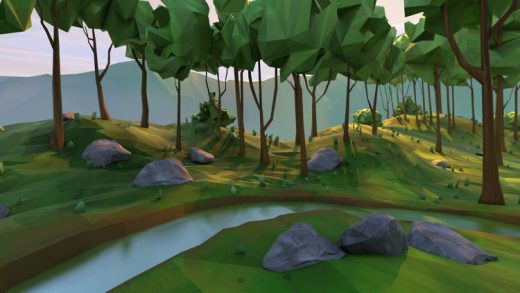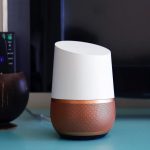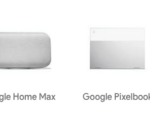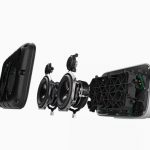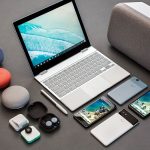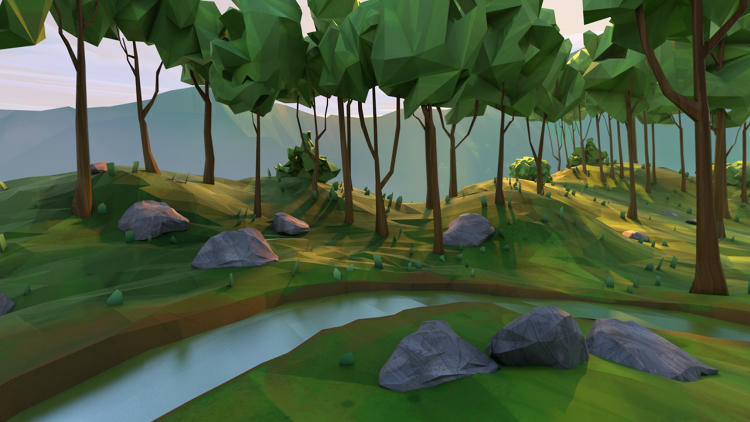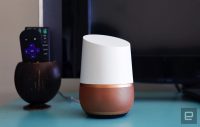Daydream: Google’s Ambitious New Bid To Bring VR To The Masses
Today at Google I/O, the company revealed a new virtual reality standard that may finally bring VR to the masses. It’s called Daydream, and it’s an open-source headset and motion controller that’s compatible with souped-up Android phones. Daydream will arrive this September for an unknown, but likely not that expensive, price.
If Google pulls it off, Daydream will be both cheaper and easier to use than its fancy VR counterparts, because Google has reimagined Android software to work in VR—and every Android phone of the future could be built VR-ready at its core.

Google Finds A Better Metaphor For VR
When you think about VR, what’s the metaphor you use? The Matrix? Lawnmower Man? It’s all dark imagery of headsets, body suits, black metal and plastic, like someone designed a commando knife for your face, then tethered it to a 1980s PC with more wires than your surround sound home theater system. It became the HTC Vive or Oculus Rift.
That’s one end of the spectrum. On the other, you have Google Cardboard. It’s literally the prize from a cereal box, stuck to your face. It’s cheap, fun, and inherently kind of crap. Nobody wants to unwind from a stressful day by climbing into a cardboard cube.
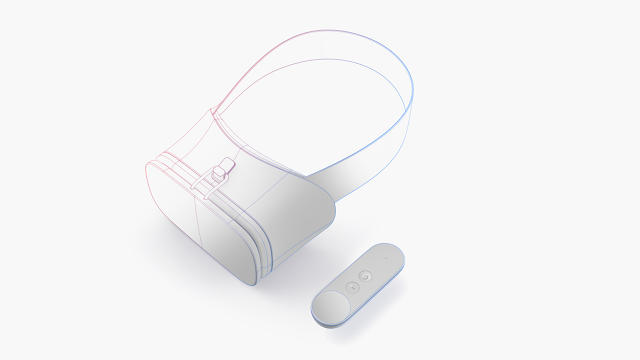
With Daydream, Google has landed on a happy medium. It’s a headset that’s built with soft materials like fabric. It takes only a moment to pop your phone inside, then it clasps shut like the lever on a self-corking bottle, and you’re in VR. By swinging what looks like a TV remote, you can do things like grab objects, flip pancakes, or go fishing in the virtual world.
In Daydream, you can walk the sidewalks of Paris with Streetview or watch YouTube clips on an IMAX screen, and it probably won’t be that expensive (we’d ballpark $100 or less, given the comparative price of the Samsung Gear VR).
How? Because Google created the Daydream headset and controller as a reference spec that’s open for any manufacturer to make—and potentially even compete with each other to drive down the price. And Google being as influential as it is, the company convinced Android phone manufacturers to build their phones differently. So your next Android phone may double as one of the best VR headsets in the world—one that you may actually want to use.

Google Is Upgrading Android, And Convincing Phone Manufacturers To Standardize For VR
But why will Daydream be any better than the mobile VR offerings of Cardboard, or Samsung’s (admittedly superb) Gear VR? In short, it’s the software, and it’s the hardware.
On the software side, Google has built Android N (that’s the next version of Android coming out this September) to accommodate VR. Developers can code their software to take full advantage of the phone’s processing cores to push the sorts of specs you need for VR, like high frame rates. For users, Android will be designed to feel welcoming to people in VR. Upon putting on the headset, Android users will enter a new app called Daydream Home that looks like a virtual 3-D environment, crossed with an app manager. Android N will also support several VR-enabled core apps on the phone. That means you can buy items inside a VR version of Google Play, or use Streetview and YouTube in VR. Right now, if you use a VR headset on an Android phone, you feel sequestered to a select few apps. Android N seems to invite Daydream VR as an alternate way of using the phone itself.
On the hardware side, Google has convinced phone manufacturers to build what are being called “Daydream Ready” phones. The list of partners is long and impressive, including Samsung, HTC, Huawei, Xiaomi, LG, and HTC. Google doesn’t go into a lot of detail on what constitutes a Daydream Ready phone, but they appear to be certified to share basic specs of performance (processors, GPUs, and RAM), a few extra sensors, and similarly designed screens that can allow the phone to slip into a special set of lenses to transport you into high-performance VR. (Samsung’s Gear VR works so well because it has extra sensors inside. Daydream distributes all of the technology to the phone itself, so many VR experiences could perform just as well with a super simple, lens-only Cardboard style headset.)
How good will the Daydream experience be? It’s hard to know without actually trying it, and Google isn’t offering demos at I/O. Daydream still won’t have the full six-axis tracking that the highest-end headsets, the Oculus Rift and HTC Vive, do. That means in Daydream, you can still look around up, down, and in a 360-degree circle, but when you poke your head forward or lean back, your perspective doesn’t change. It’s a compromise of immersion, but from my experience, VR can still leave you in awe without all six axes involved.
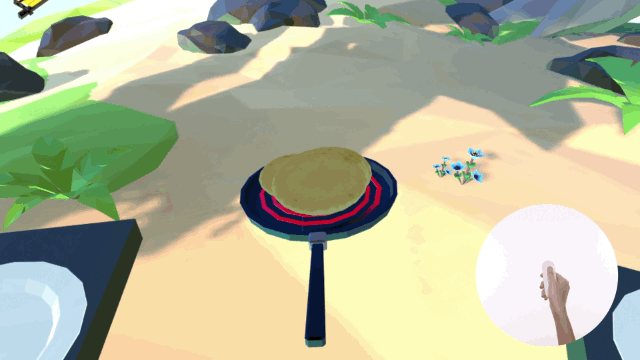
But The Bigger Deal May Be Google Standardizing The Control Of VR
Alongside their Daydream headset, Google also introduced what looks like a littler version of Nintendo’s Wiimote controller. They’re not sharing much in terms of technical specs, but it appears to be a motion-sensitive remote that enables all those gestures you might remember from the Nintendo Wii. (Tennis, anyone?) It also features a touchpad on top, so you can flick or swipe.
The importance of this little remote to the future of VR can’t be overstated. It’s Google’s attempt to bring control parity to the mobile VR industry, all via an approachable bit of industrial design that shouldn’t freak people out like a pair of these. And Google seems to want their headset and remote to feel comfortable and intuitive above all else.
Thus far, mobile VR has relied entirely on an aim-your-head, tap-one-button on your temple, control experience. That’s a literal pain in the neck after about 20 minutes. There has been limited support for gamepads and other controllers, but the problem is that, with countless hardware manufacturers developing their own weird configurations, there’s no baseline for all of the app developers to design to. So even an app that technically supports a gamepad might not play very well, because the tiniest bits of finesse with an analog stick are lost to a developer coding for 10,000 different possible controllers. Meanwhile, Google has created one remote to rule them all.
Daydream Will Be The Way Most People Experience Decent VR, Soon
Google could be successful because the company is really thinking through the whole ecosystem of VR—hardware, apps, the UX, and even the phones that could power a mobile VR revolution. However, Google still faces one big hurdle: Google. The company’s broad strategy makes a lot of sense, but that doesn’t change the fact that it has an unsteady track record when stepping into the world of hardware. There’s no guarantee that any piece of hardware designed by Google will be a hit. Google’s own Nexus smartphones (technically made by third parties) are not the most popular Android phones, and Google abandoned projects like the Nexus Q and Google TV from lack of interest. If Daydream flops out of the gate, what then?
But I can’t help but consider the brass tacks: Five million Google Cardboard headsets have sold to date. One million people are using Samsung’s Gear VR. These numbers are respectable in a world that’s only trending more in the direction of mobile. Meanwhile, there are 1.5 billion active Android phones in the world. They can’t, and won’t, support Daydream today. The next 1.5 billion, however? If the standards are in place to make the experience both decent and affordable, why not? With Daydream, Google just gave us a VR standard that could unite the mobile VR world. And increasingly, it’s looking like the mobile VR world may be the only one that matters.
All Images: courtesy Google
(31)

